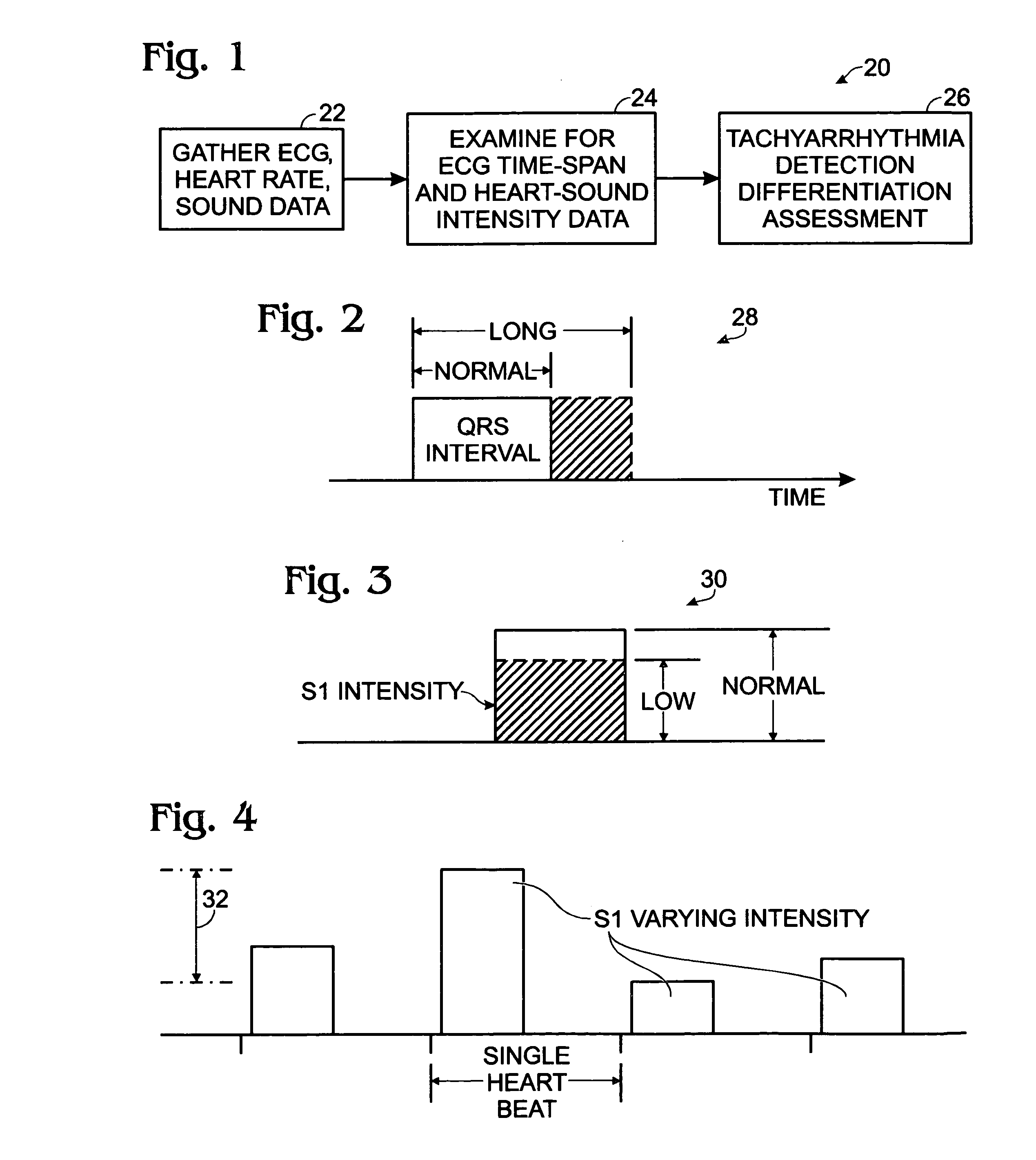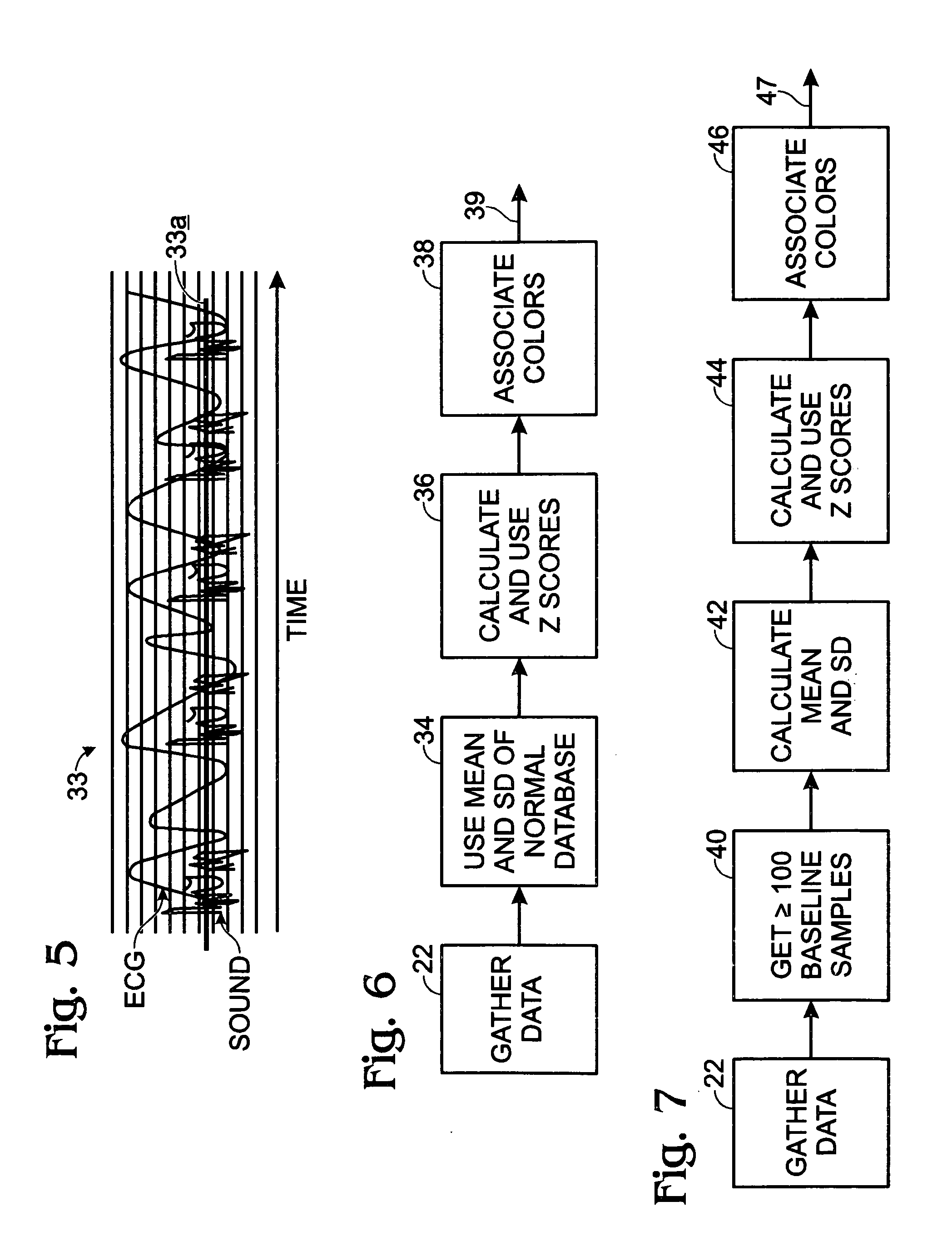Tachyarrhythmia detection, differentiation and assessment
a tachyarrhythmia and differentiation technology, applied in the field of tachyarrhythmia detection, differentiation, assessment and characterization, can solve the problems of terminal event, inability to detect, or prevent, deterioration to an extremely dangerous level, and inability to detect, and achieve the effect of preventing death, preventing death, and preventing death
- Summary
- Abstract
- Description
- Claims
- Application Information
AI Technical Summary
Benefits of technology
Problems solved by technology
Method used
Image
Examples
Embodiment Construction
[0033]Turning now to the drawings, and referring first of all to FIGS. 1-4, inclusive, indicated generally in block / schematic form at 20 in FIG. 1 is the structure of the methodology of the present invention for tachycardia / tachyarrhythmia detection, differentiation, characterization and assessment. Methodology 20 is illustrated specifically in FIG. 1 by three labeled blocks 22, 24, 26.
[0034]Block 22 represents the step, or steps, involved in gathering, or collecting, time-frame-simultaneous ECG and heart-sound information, along with important heart-rate information. Heart-rate is obtained herein from measurements of the RR interval to which the heart rate is inversely related. This heart-rate information is needed, of course, for identifying and confirming, basically, whether or not a potential tachyarrhythmia condition which is to be detected and characterized by the present invention is in fact underway with respect to a particular person. This condition is referred to herein as...
PUM
 Login to View More
Login to View More Abstract
Description
Claims
Application Information
 Login to View More
Login to View More - R&D
- Intellectual Property
- Life Sciences
- Materials
- Tech Scout
- Unparalleled Data Quality
- Higher Quality Content
- 60% Fewer Hallucinations
Browse by: Latest US Patents, China's latest patents, Technical Efficacy Thesaurus, Application Domain, Technology Topic, Popular Technical Reports.
© 2025 PatSnap. All rights reserved.Legal|Privacy policy|Modern Slavery Act Transparency Statement|Sitemap|About US| Contact US: help@patsnap.com



